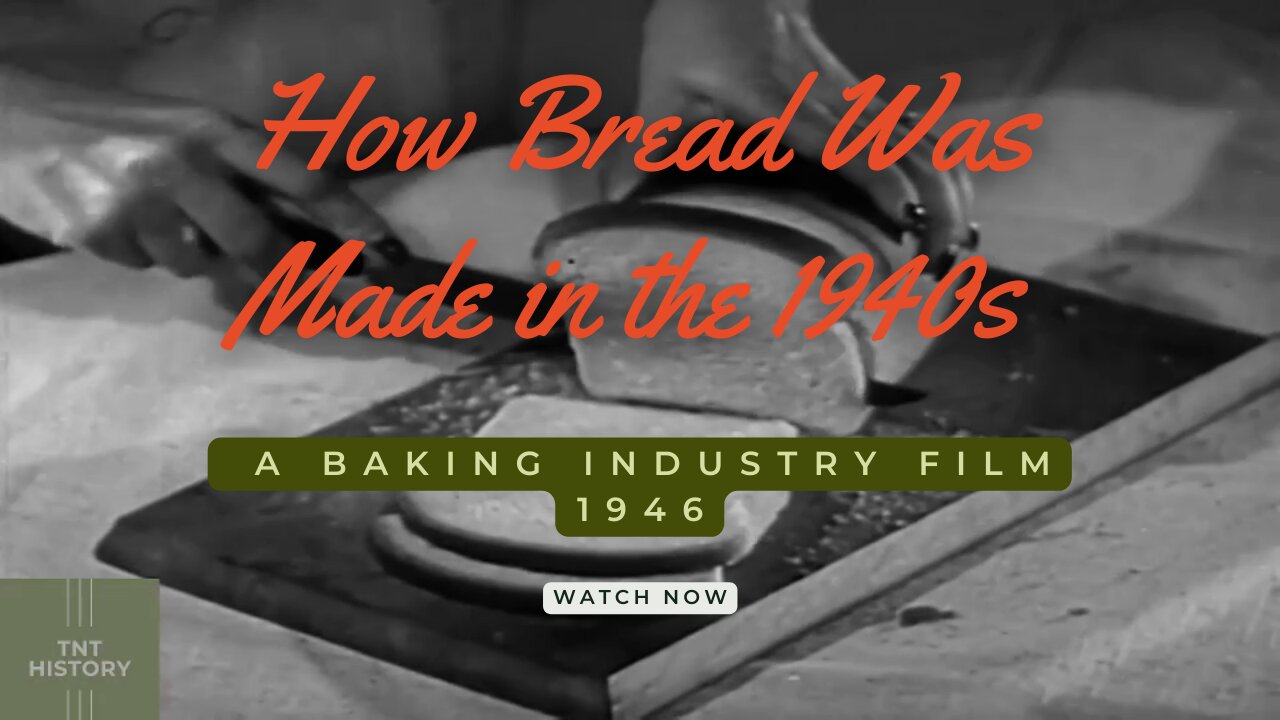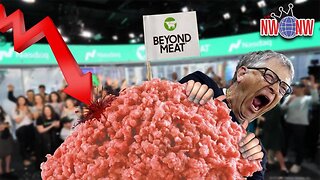Premium Only Content

Bread Production: How Bread Was Made in 1942 - A Glimpse into the Past
In 1946, a vocational guidance film provided a comprehensive overview of the baking industry as it existed in the 1940s. The film meticulously explores the various stages and techniques involved in bread production, offering insights into the training required for these roles. Moreover, it distinguishes between large-scale commercial bakeries and the increasingly rare small, family-owned bakeries. Notably, the film offers a behind-the-scenes look at the complete bread-baking process at the Schulze Baking Company Plant, operated by the Interstate Bakeries Corporation, located in Chicago, Illinois.
The 'Your Life's Work' series of films, including this one, often take a somewhat humorous approach by highlighting the "qualifications" needed for various professions, including that of a baker. It humorously points out the unexpected role of physics, chemistry, and mathematics in the art of baking. This film specifically showcases a range of bakery positions, such as the pan loader, with the succinct description that the pan loader's primary task is loading dough into pans.
HISTORICAL CONTEXT:
Bread, a dietary staple created from a dough mixture of flour and water, primarily through baking, has enjoyed worldwide popularity throughout documented history. Its significance dates back to the earliest days of agriculture.
The composition of bread, including the types of flour and other ingredients used, varies significantly across cultures, leading to diverse forms, shapes, sizes, and textures of bread found worldwide. Leavening processes differ as well, ranging from natural sourdough fermentation to the use of chemicals, industrially produced yeast, or high-pressure aeration. In some cases, bread is baked prior to leavening. Additional ingredients like fruits, nuts, and fats may also be incorporated. Commercially produced bread often includes additives to enhance flavor, texture, color, shelf life, and production efficiency.
Bread serves as a versatile accompaniment to any meal throughout the day. It's consumed as a snack, utilized as a primary component in various culinary preparations, such as sandwiches, or used for coating fried items to prevent sticking. Bread forms the essential base of bread pudding and serves as a stuffing material to fill cavities or retain juices.
Beyond its role as sustenance, bread holds significant social and emotional value and plays vital roles in religious rituals and secular culture. Its influence on daily life is reflected in language, idiomatic expressions (e.g., "He stole the bread from my mouth"), religious prayers ("Give us this day our daily bread"), and the etymology of words (e.g., "companion" from Latin "com" meaning "with" and "panis" meaning "bread").
Common bread is typically crafted from wheat-flour dough that is fermented with yeast, allowed to rise, and then baked in an oven. The presence of yeast accounts for the characteristic air pockets found in bread. Due to its high gluten content, common or bread wheat is the most frequently used grain for bread-making, making a substantial contribution to the world's food supply.
However, bread can also be made from the flour of alternative wheat species, such as spelt, emmer, einkorn, and kamut. Non-wheat cereals, including rye, barley, maize (corn), oats, sorghum, millet, and rice, have been used to make bread, typically in combination with wheat flour due to their lower gluten content.
The impact of World War II on the bread industries of the UK and the US was profound. Baking schools were forced to close during this period, resulting in a shortage of skilled bakers when the war eventually concluded. In response to the world's demand for bread, new methods emerged, including the introduction of chemicals into dough, premixes, and specialized machinery. Unfortunately, these innovations led to the near extinction of traditional baking techniques, which were deemed obsolete and financially unsustainable. Traditional bakeries became increasingly scarce during this era.
The introduction of sliced bread in 1928 marked a significant advancement in the baking industry. It was promoted as "the greatest forward step in the baking industry since bread was wrapped." This breakthrough gave rise to the popular expression "the greatest thing since sliced bread." Interestingly, during 1943, U.S. authorities briefly banned sliced bread as a wartime conservation measure.
●Visit Jadesales.shop for Reliable and Affordable Products - Free Shipping on Orders over $45
►Electronics: https://bit.ly/Electronic-Collection
►Health Products: https://bit.ly/Health-Items
►School Supplies: https://bit.ly/Jade-Sales-School-Supplies
#BreadProduction #1942 #BakingHistory
-
 7:25
7:25
The Shannon Joy Show
14 hours agoWhat is the PRIME Act? With Rep. Thomas Massie
6941 -
 24:17
24:17
The Official Corbett Report Rumble Channel
10 hours agoGates' Fake Meat Agenda Flops! - #NewWorldNextWeek
1.34K8 -
 LIVE
LIVE
Simply Bitcoin
1 day agoLiving Off Bitcoin: Solar Mining in a Trailer
84 watching -
 LIVE
LIVE
Side Scrollers Podcast
17 hours ago🔴FIRST EVER RUMBLE SUB-A-THON🔴DAY 4🔴BLABS VS STREET FIGHTER!
1,720 watching -
 LIVE
LIVE
Lofi Girl
2 years agoSynthwave Radio 🌌 - beats to chill/game to
115 watching -
 DVR
DVR
Simply Bitcoin
1 day agoBitcoin Nomads: Building Circular Economies in Africa
870 -
 1:09:06
1:09:06
Mike Rowe
12 hours agoWhy Are There Condoms In Women's Prisons? | Amie Ichikawa #454 | The Way I Heard It
4.87K8 -
 34:05
34:05
Matt Kohrs
18 hours agoPlan B w/ Preston Pysh || The Matt Kohrs Show
14.8K -
 2:10:55
2:10:55
MG Show
18 hours agoPeter Navarro Destroys the CFR; President Trump Meeting with Secretary General of NATO
15K11 -
 1:37:13
1:37:13
FreshandFit
11 hours ago74 Year Old Wonders Why She's Still Single
285K13